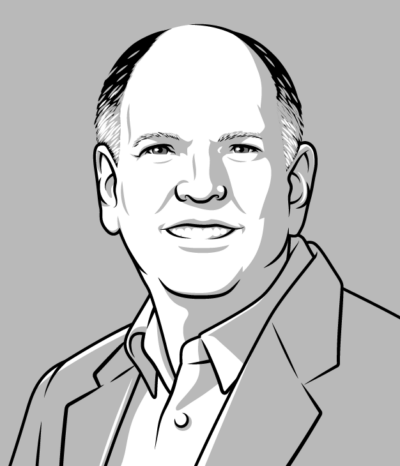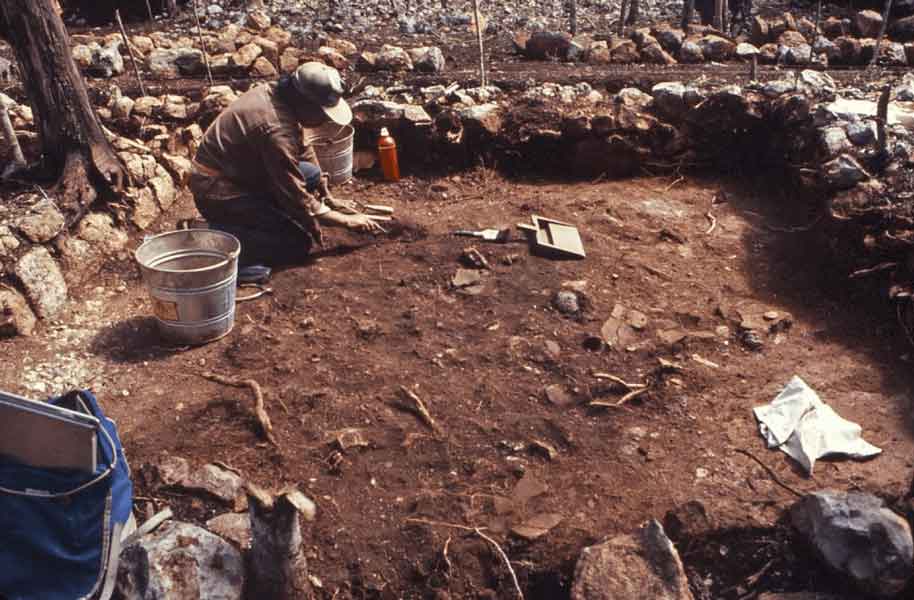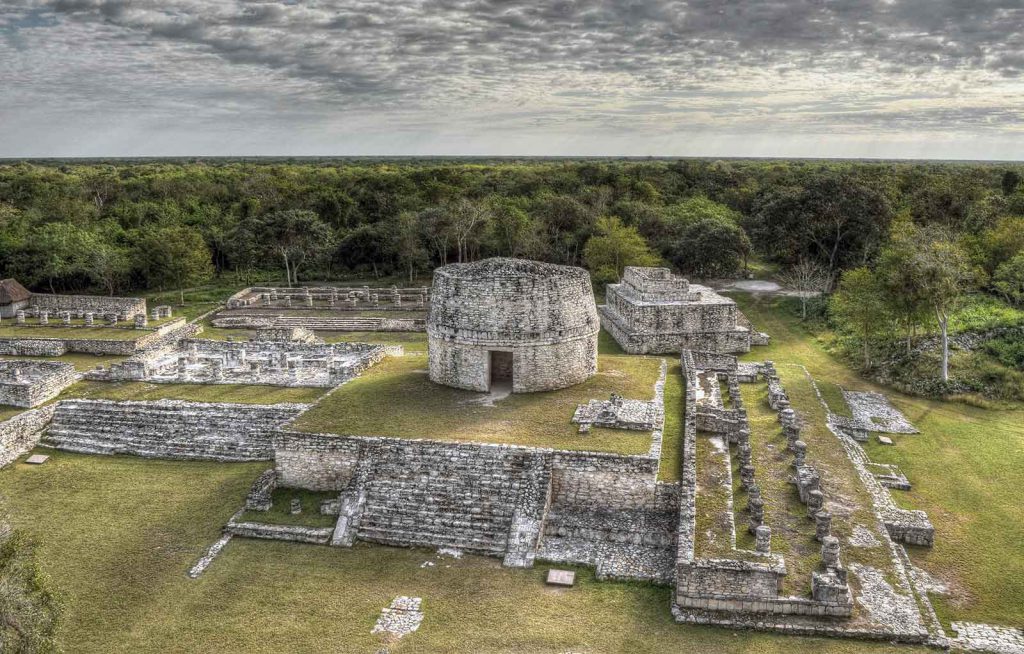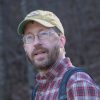Archaeology of the 99 Percent
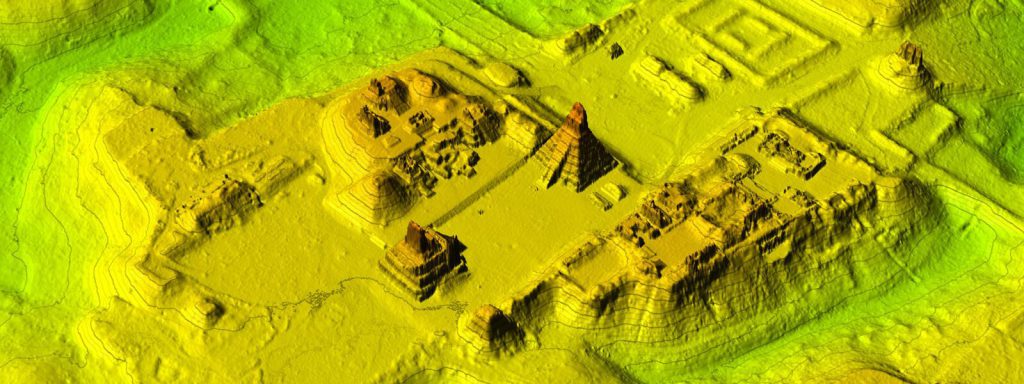
This Q&A was originally published by Knowable Magazine. Knowable Magazine is an independent journalistic endeavor from Annual Reviews.
Until the past few decades, archaeology was all about the grand and the wealthy, focused on temples, palaces, and spectacular artifacts—think King Tut’s tomb or the great temples and palaces of the Mayan city of Tikal. Jeremy Sabloff, an archaeologist now retired from the University of Pennsylvania and the Santa Fe Institute, was part of the generation that changed that. Sabloff built his career on the study of the common folk of the Maya civilization of Mexico and Central America, mapping and excavating entire cities to study who lived where, and how.
In the 2019 Annual Review of Anthropology, Sabloff looks back over the 50-plus years of his career and reviews what archaeologists have learned about the Maya through the study of settlement patterns. Knowable Magazine spoke with him about the archaeology of common folk.
This conversation has been edited for length and clarity.
Why had archaeologists overlooked the commoners for so long?
Before World War II, archaeological research was funded mostly by museums or wealthy individuals or foundations. They wanted spectacular finds—temples and palaces—not the remains of perishable structures of everyday life. They wanted royal burials, such as King Tut’s tomb, the royal treasures of Ur, great sculpture, murals, beautiful pottery, jade, what have you. They were looking for materials that they could bring back and display in museums.
And why did that change?
Until the middle of the 20th century, much of archaeology was also carried out by people of wealth. The makeup of the field changed significantly after World War II, and its practitioners became much more middle-class. One reason is there were a lot more jobs available, particularly at state universities. And you started to be able to get grants for fieldwork that wasn’t based on looking for objects or spectacular finds. All of this is related to the switch from the 1 percent to the 99 percent, as I’ve flippantly called it.
For the Maya area specifically, the galvanizer was Gordon Willey at Harvard University. He had already been a pioneer in what was called the settlement pattern approach: He wanted to see the whole settlement of an archaeological site, not just the major buildings. He was just as interested in mapping the remains of perishable wooden thatched houses, what little was left, as in stone temples and palaces. It’s not that houses of ancient Maya peasantry had been ignored, but Willey was the first to concentrate attention on these and say: How can we understand Maya society as a whole?
This concern with settlement pattern, with looking at the 100 percent instead of just the 1 percent, not only broadened our understanding but completely changed it. The older view of the Maya was of a non-urban, peaceful people ruled by priest-astronomers. The elaborate temples people had found at Tikal and elsewhere were thought to be merely ceremonial centers with minimal populations, and not cities in their own right. But mapping projects at Tikal and other places showed that they weren’t just ceremonial centers—there were large numbers of remains of houses. These were actually urban centers of some kind. That totally changed the understanding of the pre-Columbian Maya.
Why did you choose to focus on the archaeology of commoners?
There are really two answers to that. One is: I was a student of Willey’s. I started in 1965 on a project in the tropical rainforest of Guatemala that was looking at the full range of Maya remains. So I was thrust into that. But also it was related to my general interest, which was: How do we understand the development through time of Maya civilization? Clearly, if you were going to ask questions like that and get useful answers, you had to look at the full range of ancient Maya society.
How do you study settlement patterns?
We want to get a sense of the distribution of all the kinds of housing and how they’re situated on the landscape, and in particular, find information about the inhabitants of the different kinds of architecture through detailed collection of materials on the surface and excavation, where that was possible.
One of the projects that I co-directed was at the site of Sayil in northern Yucatan, south of modern-day Merida. We wanted, first of all, just to produce a map of the urban area so we could get some idea of the extent and nature of the structures. One reason we chose to work at Sayil is that there had been very little disturbance after the 16th century. Where there had been a wooden thatched house, the single row of stones that supported the wooden poles of the walls was still there, so you could actually see the layout of rooms, the platforms they might have been built on, and so forth.
We also did a little excavation of these more perishable structures so we could fill in a little more. Could we get a sense of household composition? How many rooms would a family have had? What would we find in the kitchen area? One of the interesting things we found is that open spaces between houses, which used to be thought of as small plazas or something, in fact were vegetable gardens where they’d been growing beans, squash, tomatoes, and so on.
We found stone tools made of obsidian, which is not available locally. So you start getting into questions of trade. Economically, where could you find marketplaces? What was being sold there? Were goods accessible to both elite and non-elite, or are some things available only to one and not the other? All of those let you ask questions about how the ancient society functioned and also how this might have changed through time. It’s a much richer picture of pre-Columbian ancient Maya society.
The richer picture we’re getting of the 100 percent is aided by tools that archaeologists 50 years ago just didn’t have available. In terms of settlement-pattern mapping, one of the huge technical breakthroughs in recent years is remote sensing, particularly lidar, where low-flying aircraft or drones send down laser beams and you can see the ground without the trees. You can see stone courses. You can see the remains of houses, causeways, roads, defensive fortifications. That’s going to make the mapping of sites much simpler, particularly in difficult situations like tropical rainforest or a heavily wooded area. We’re able to cover much bigger areas with much greater detail and accuracy than ever before. New lidar-based studies in the Southern Maya Lowlands are showing that many pre-Columbian Maya cities were more extensive than previously thought, although these new data are awaiting confirmation by on-the-ground research.
What were the lives of commoners like?
First of all, what we learned is it’s difficult to talk about Maya peoples as a whole at any one time. Throughout the Maya area—and that covers parts of modern-day Mexico, Belize, Honduras, Guatemala, and El Salvador—there was a great deal of variability, both through space and through time. Someone living in a small town in northern Yucatan may be different from Maya living in the highlands of Guatemala or Honduras.
It’s an agricultural society. But clearly, you had artisans of all sorts. Some of them are family-based, producing pottery, stone tools, decorative materials; others—for example, weavers or those making especially beautiful painted pottery—might be supported by the elite.
Has looking at the whole picture given scholars a different view of post-classical Maya civilization?
One of the best sites for understanding that is the city of Mayapan, not too far from modern-day Merida in the Yucatan. There’s been work going on there for a number of years by a large international team. This was a walled city that thrived mainly from the mid-13th to mid-15th centuries. It was thought to be a decadent period—Maya gone downhill—because you didn’t have these large investments in beautiful architecture, in the temples and palaces.
But we found that economically and socially, things were just as complex, if not more complex. The rulers of the city weren’t sinking their capital into grand architecture or elaborate tombs; they were using it to develop warehouses, trading routes, and boats—all the infrastructure of local and long-distance trade. To my mind, that’s not decadent at all.
Are there lessons we can learn from the Maya that apply today?
Classical Maya civilization collapsed in the 9th century, but the Maya didn’t disappear—there are over 10 million Maya speakers today. What allowed them to continue after their cities collapsed? This gets into questions of population growth, of warfare, drought, and climate change, which are all relevant. Answers to those aren’t necessarily going to solve modern problems, but I’m a firm believer that there are potential lessons from the past. What were they successful at? What did not work? How were they resilient in the face of drought or warfare? Obviously the pre-Columbian Maya and other ancient states are different from today, but they can at least give background and context to illuminate modern problems. I think this is why archaeology classes are still booming around the country today.
And archaeology goes on up to the present day. There’s a huge interest in this country in the archaeology of slavery. Even though that’s recent history, the written history did not give you the same kind of detail of the lives of the slaves as they did of the people living in the main house. Archaeology is helping reveal that.
There are archaeologists looking at the remains of homeless camps to try to get more insights into something that’s happening today. That’s an example of a fuller archaeology of all the groups no matter how spectacular or seemingly non-spectacular their material remains are.































